The Independent's journalism is supported by our readers. When you purchase through links on our site, we may earn commission.
Patriotism, nostalgia and national identity: The complicated politics of England football shirts
As the pride in national identity associated with Cool Britannia has splintered, Tom Victor explores why Millennial football fans are opting for vintage kits when it comes to supporting England at the Euros
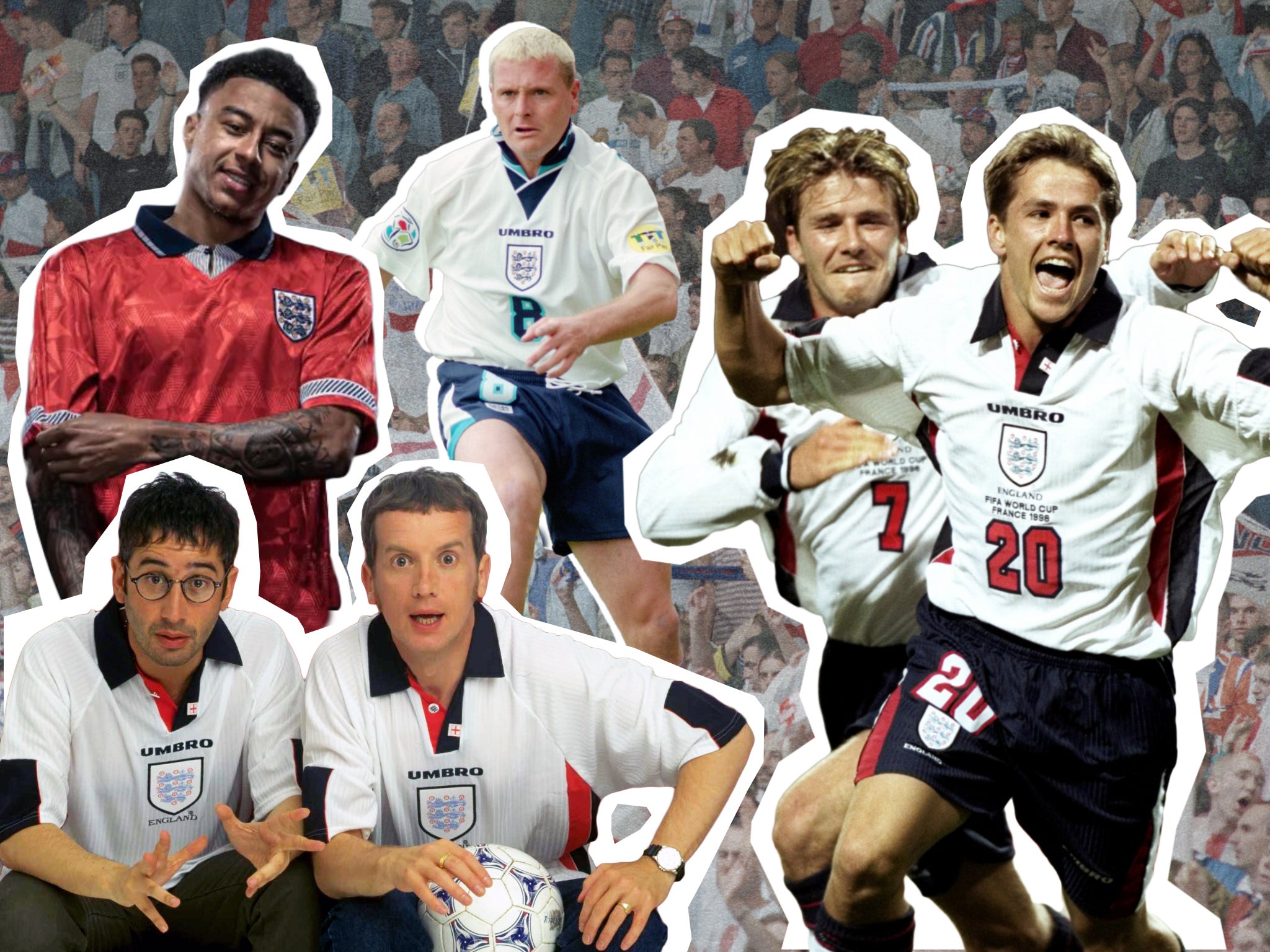
As hordes of England fans made their way to Wembley for the last-16 victory over Germany at Euro 2020, Finnish football expert Rich Nelson tweeted about the omnipresence of football shirts of a certain vintage. “A *lot* of men aged 35-50 on the train in a range of old England shirts”, Nelson wrote. “All Umbro, all pre-2006. Weird”.
The shirts in question: the home kit of 1996, with their the distinctive blue-on-blue collar; and of 1998, with their red and navy trim. If fans are feeling braver, they’ll opt for the grey shirt forever attached to Gareth Southgate’s penalty miss at Euro ‘96, a colour more likely to be seen in the pub than on an actual England player these days. Elements of those 1990s styles have been alluded to with current kits, almost as if to recognise this attachment, but why would fans opt for the homage when the original - with all its emotional heft - is right there?
Wearing an England shirt to watch an England match isn’t exactly ground-breaking, but in recent years, the question of English national identity has shown itself to be anything but straightforward
Wearing an England shirt to watch an England match isn’t exactly ground-breaking, but in recent years, the question of English national identity has shown itself to be anything but straightforward. Perhaps that’s why, beyond the convenience of already having one in their wardrobes, many Millennial fans are choosing to opt for a retro shirt to support their country at the Euros. In many ways it evades any potential identity pitfalls of more contemporary kits.
For those who recall watching the most memorable moments of Euro ’96 – that iconic Gascoigne goal, the epic 4-1 win against the Netherlands and England eventually going out after nail-biting penalties against Germany – a vintage kit is a time machine back to what feels increasingly like a simpler era, when Britannia was, just for a split second, cool.
That’s how TV presenter Richie Driss sees it. “I think subconsciously [when I see a someone in a retro shirt] I feel like they have been about football and supporting England for that much longer and that they’re of that era and therefore we’ve been through that together,” he says.
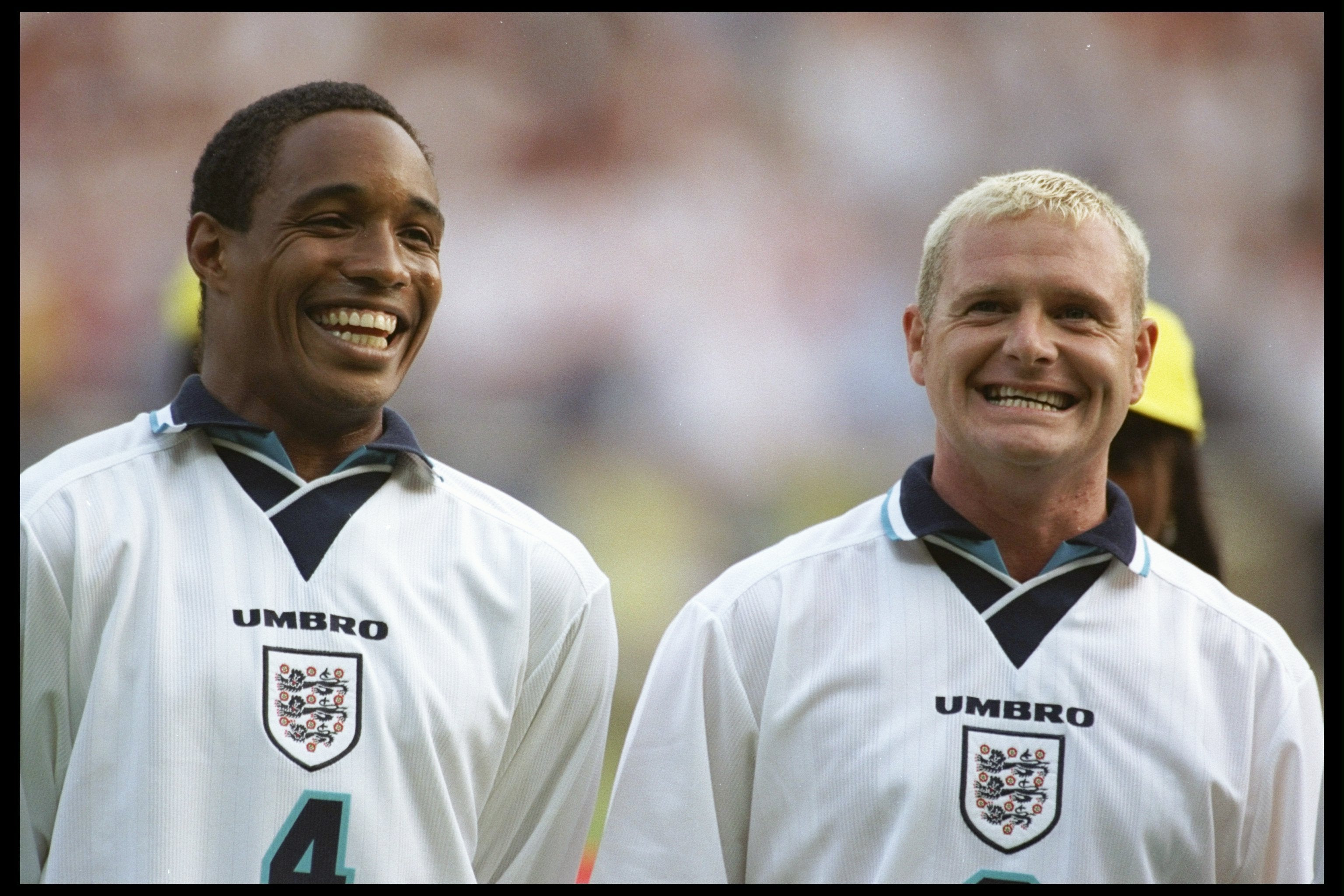
In 2021, watching football can feel a long way from a shared experience, from disputes over whether fans who booed those taking the knee should be able to celebrate Raheem Sterling, to others singing xenophobic anthems about the Germans. But is there still a chance there may be something positively unifying about a sea of England shirts?
A question of national identity
One thing retro shirts have which their more recent equivalents might not is the capacity to be worn in any situation, whether or not football is taking place. They appeal to our modern vintage sensibilities, where the kit itself is removed from any attachment to a club and valued for its aesthetic alone.
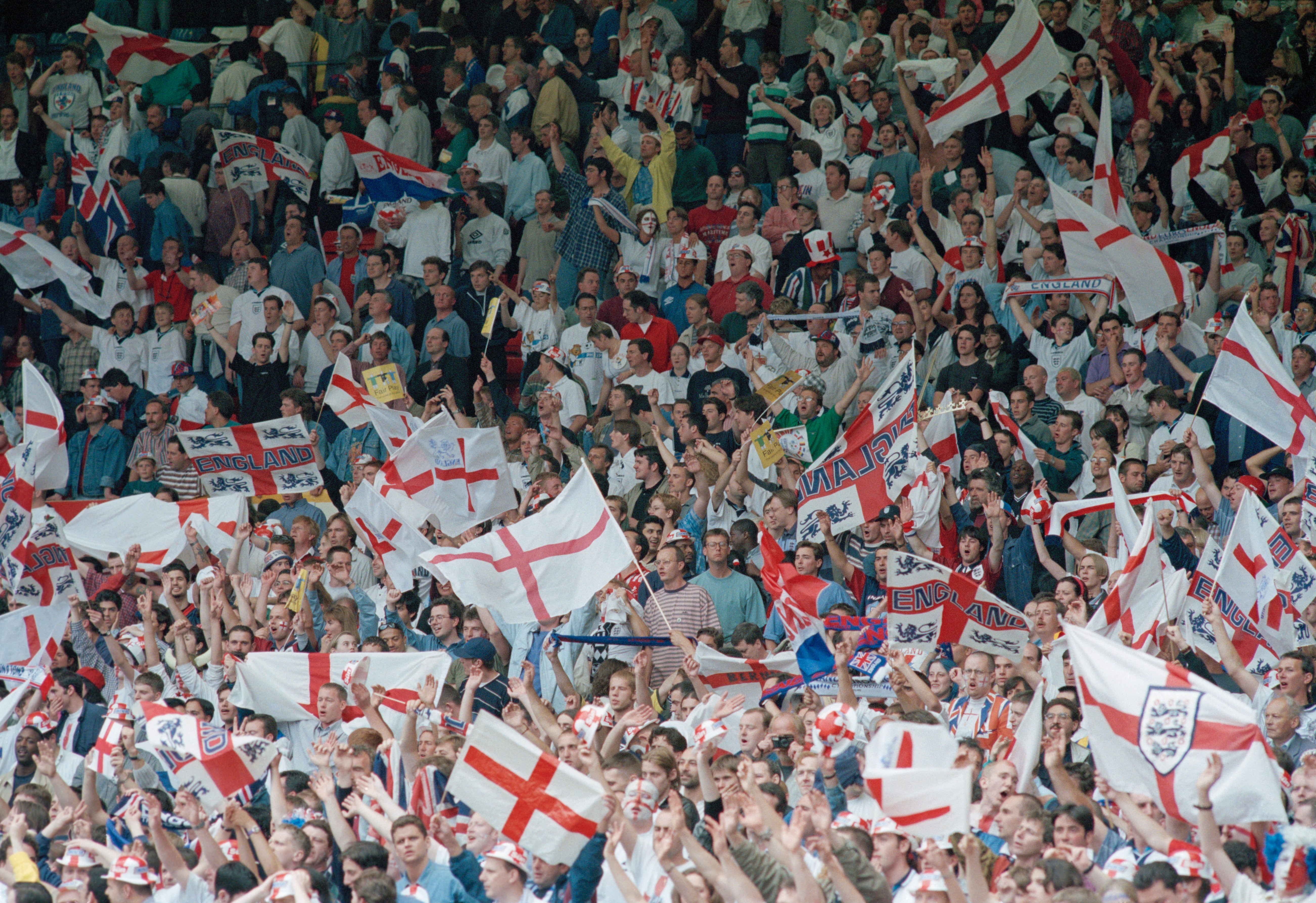
while it might be easy to distanceclubshirts from the worst elements of fandoms, this becomes harder when a national side – and in turn a national identity – is involved
If football shirts were once considered predominantly functional, with style secondary, we’ve moved away from that with companies like Mundial making no apologies for aligning football with fashion and even clubs themselves marking new kit drops with photoshoots on the street rather than in any sport-related setting. Somehow, there’s a difference between Drake wearing a vintage pink Juventus kit at a music festival to someone donning a new England shirt outside of a tournament.
Still, while it might be easy to distance club shirts from the worst elements of fandoms, this becomes harder when a national side – and in turn a national identity – is involved. It’s easy to identify the more unsavoury aspects to certain elements of England fandom, fans dressed as crusaders or chants glorifying war, to name but two. However, there are other circumstances where the line is a little blurrier. To misquote Stewart Lee, should you be vilified simply for identifying yourself as English?
“Around major tournaments a lot of people, leftists and centrists alike, start talking about progressive patriotism and reclaiming the idea of England for the forces of good,” author and football columnist Andi Thomas tells me.
“I can’t speak as to whether this counts as “love” of country, but it certainly looks like a temporary reengagement with the idea of country. I don’t think any flavour of patriotism is particularly desirable, but the willingness of otherwise flag-averse people to perform Englishness during a tournament is at least interesting.”
While perhaps uneasy about patriotism as a concept, some of us will nevertheless get swept up in fandom, aided by the simple likability of the squad members. One might expect this to prompt a move towards the current kit, as a show of solidarity with the class of 2021, but the 1996 and 1998 kits – worn by current manager Gareth Southgate in his playing days and inextricably tied to his missed penalty during the former – serve this purpose just as well.
Beyond retro
The specificity of mid to late 1990s kits appeals in the same way that we saw David Baddiel and Frank Skinner don the shirt of the time for the 1996 and 1998 music videos for “Three Lions” – they keep the attachment to past glories in the spoken rather than the visual. But more recent efforts such as Kasabian’s unveiling of the 2010 kit have held less permanence.
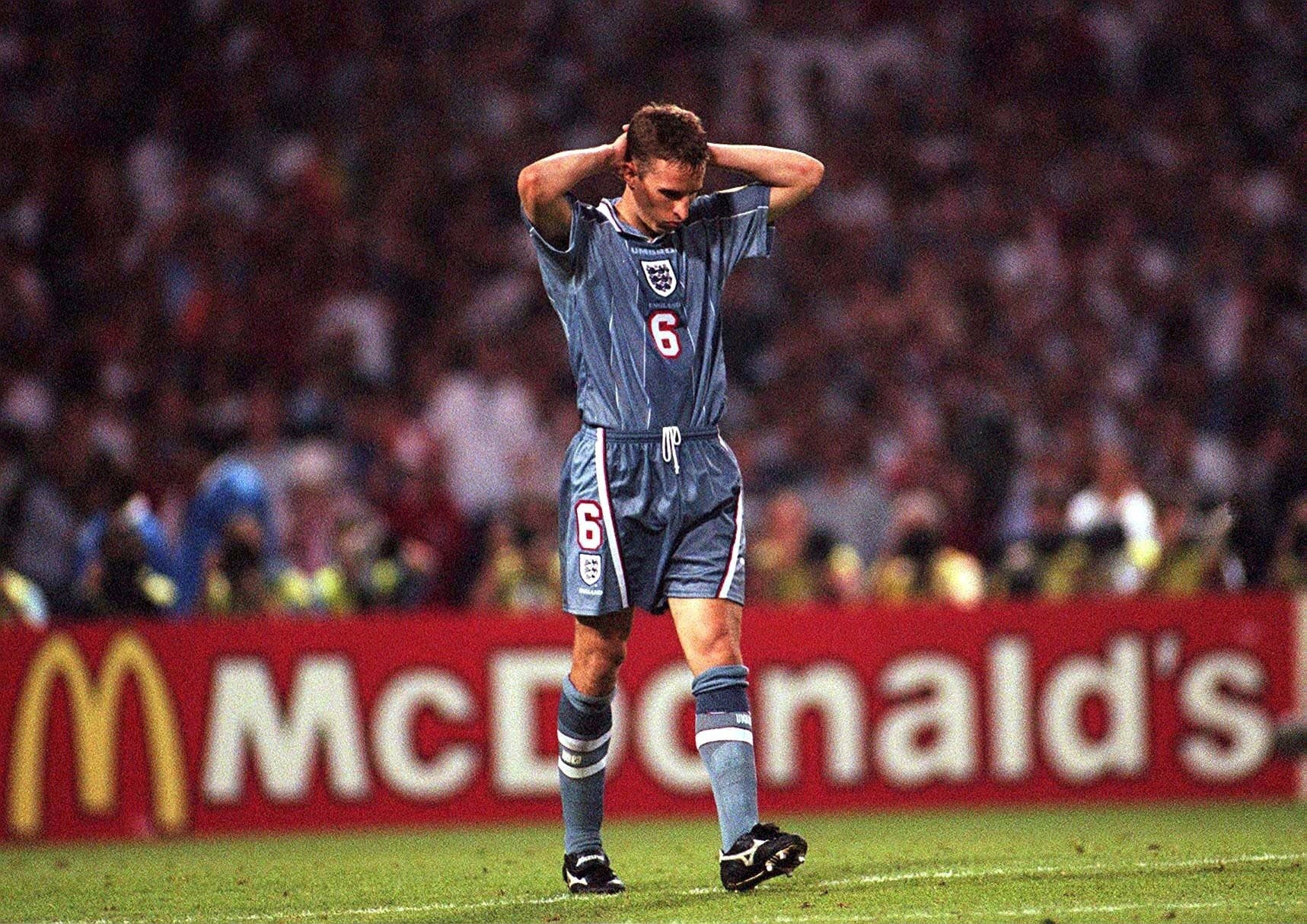
It’s as if the pride in national identity associated with the Cool Britannia era has not just ebbed but splintered, with the specific ‘Englishness’ that was once part of the 1990s celebrations, no longer quite as palatable. As Driss says, “I think looking back then it was a pride thing – with Blur and Oasis and the Spice Girls all taking over the world around the time of Euro ‘96 – whereas now it seeps over into something a lot more vitriolic, and that’s reflected in the booing of the knee.”
But is embracing the colours of our national team necessarily a bad thing in and of itself?
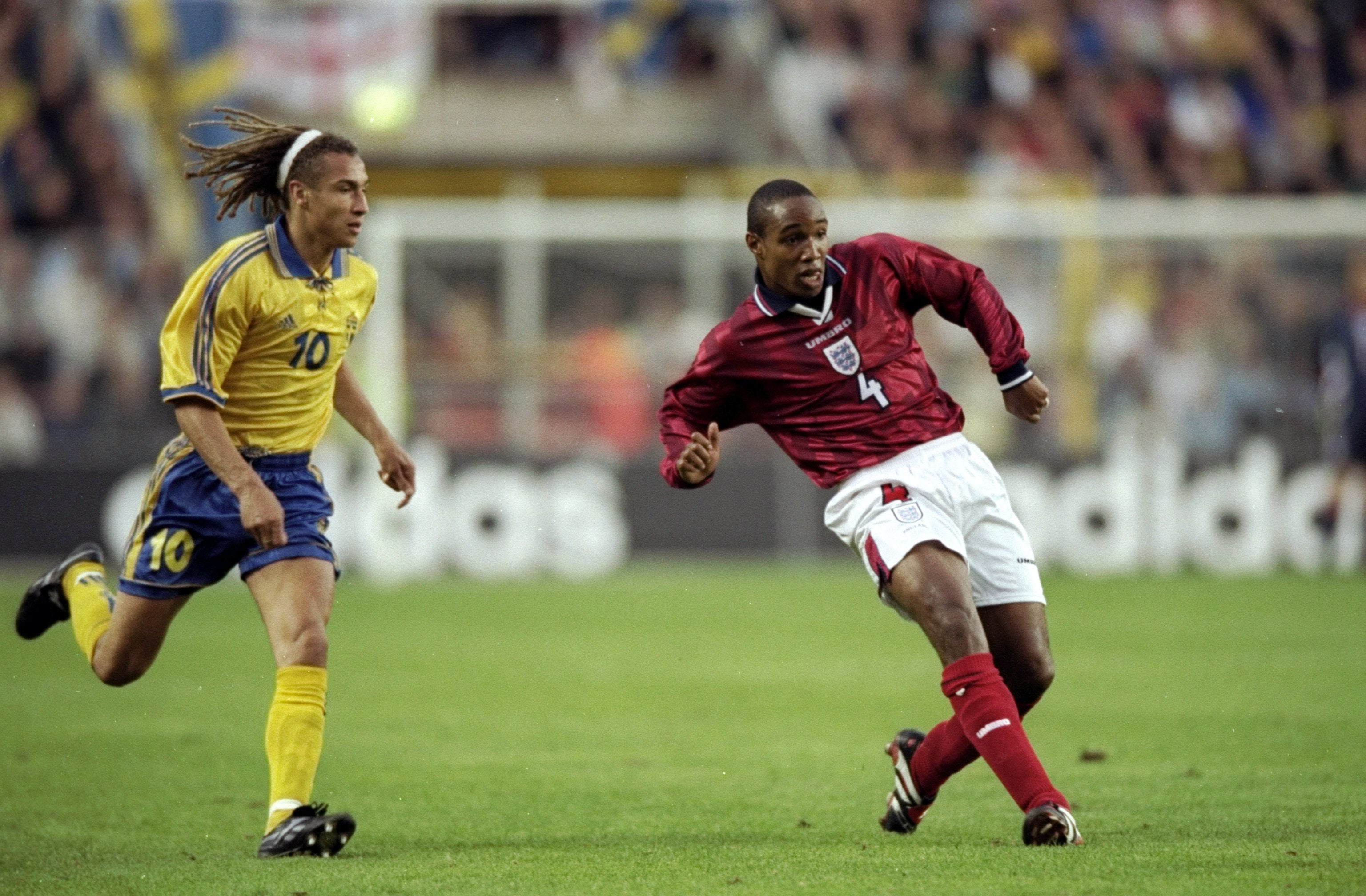
“The cool Britannia association is definitely important,” Thomas says. If a retro England shirt is a claim to a historical moment, then that particular moment was optimistic, sunny, broadly happy. But it’s also quite an interesting moment for the England team specifically. It’s the early years of the Premier League and the rise of the golden generation.”
The optimism of the England team in 2021 jars a little with the current political outlook in a way which doesn’t apply to the era of Alan Shearer and a young Michael Owen: if pride in Englishness now needs to be qualified, the hazy memories of the 1990s do not, and for many, wearing a vintage England shirt might act as a more comfortable middle ground. A way to temper your support with a layer of ironic nostalgia to make sure that, when it all goes wrong, no one thought you were too invested.
Join our commenting forum
Join thought-provoking conversations, follow other Independent readers and see their replies
Comments
Bookmark popover
Removed from bookmarks